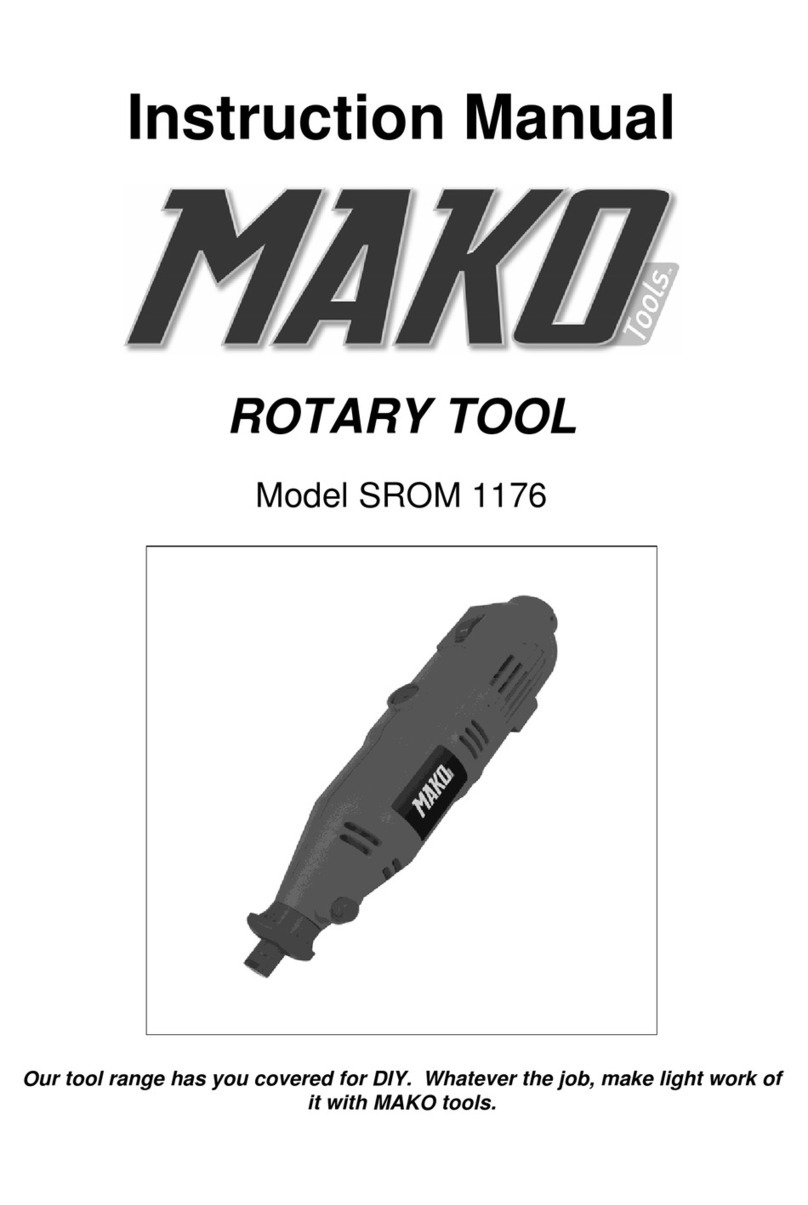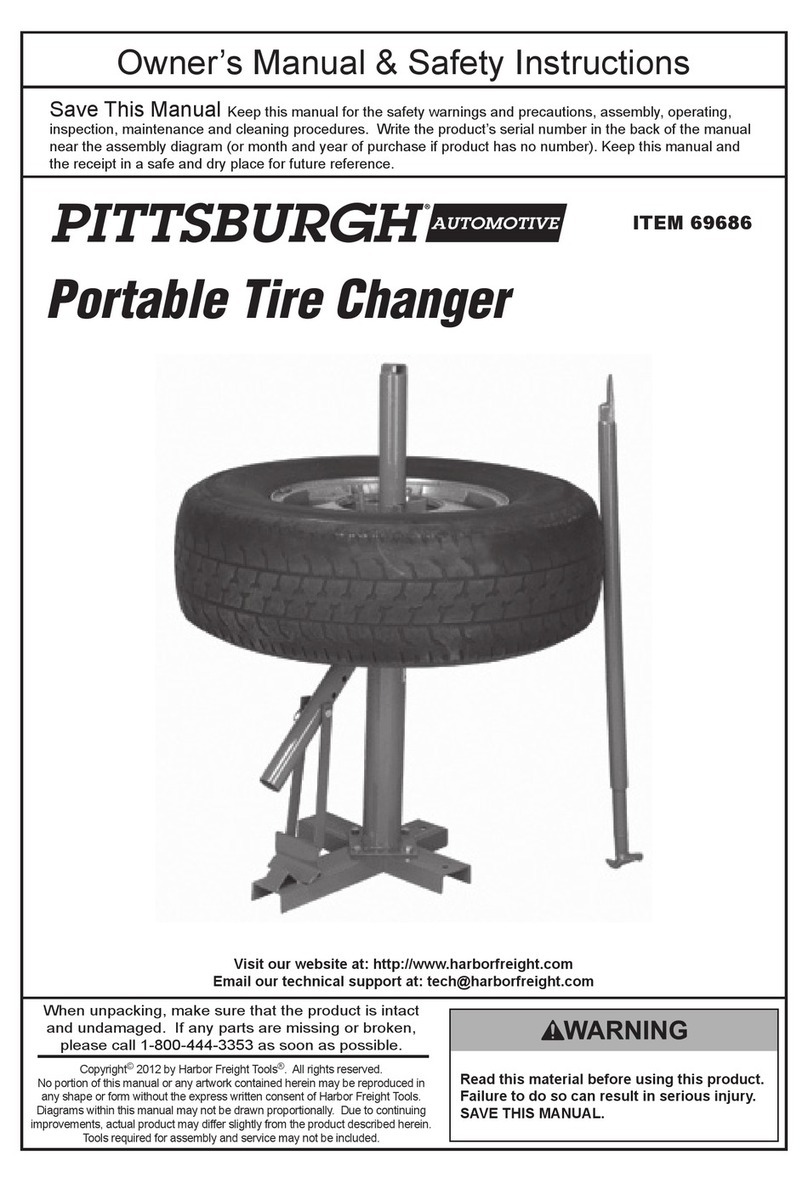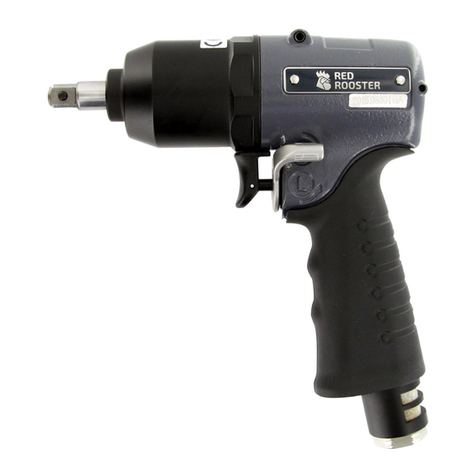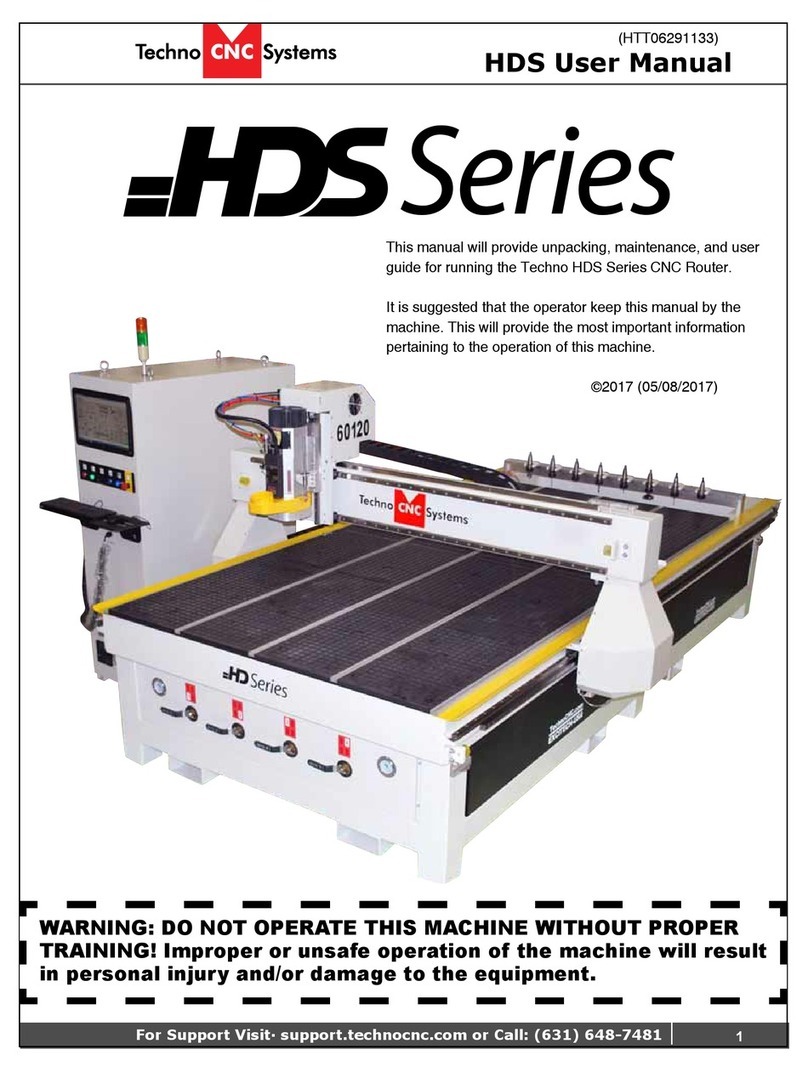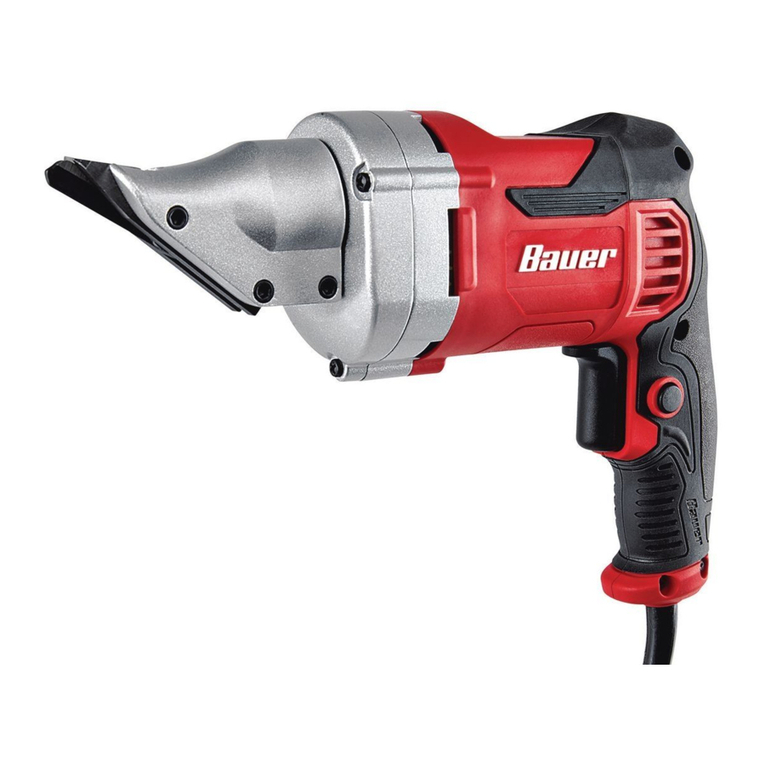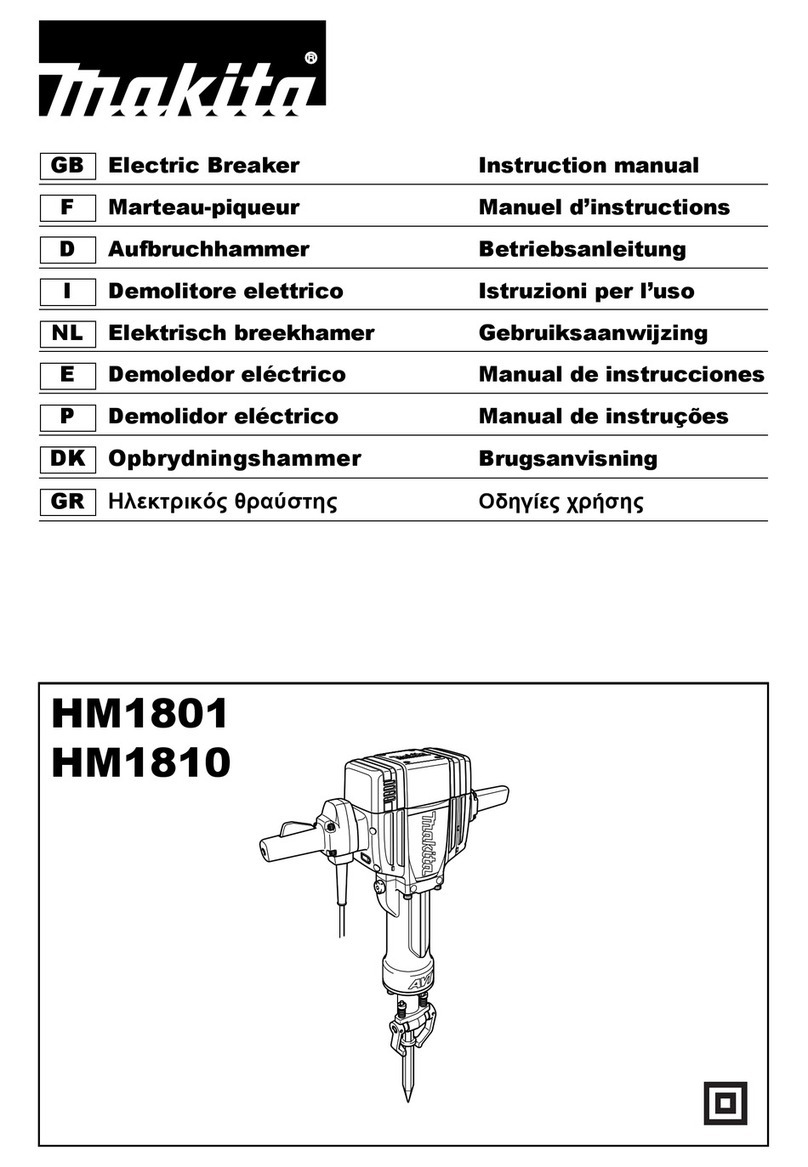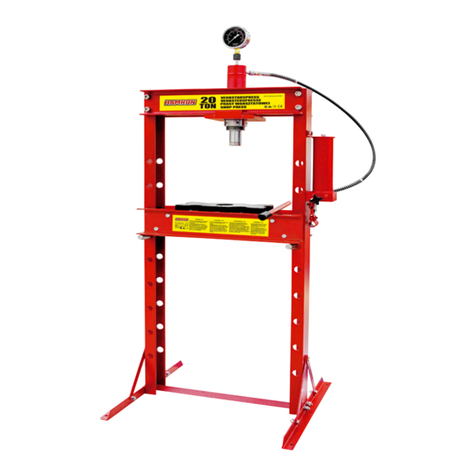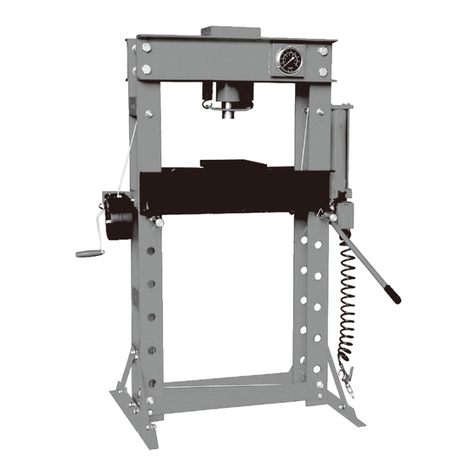Mako SROM 1195 User manual

Instruction Manual
VARIABLE SPEED JIGSAW
WITH LASER GUIDE
Model SROM 1195
Our tool range has you covered for DIY. Whatever the job, make light work of it
with MAKO tools.

Product Features:
1. Lock-on button 2. On/off Trigger Switch
3. Air Vents 4. Allen Key Holder
5. Dust Extraction Port 6. Jigsaw Base Plate
7. Pendulum Action Adjuster 8. Blade Roller
9. Rip Fence Attachment Points 10. Quick Release Chuck
11. Safety Guard 12. Laser On/Off Switch
13. Speed Control

Dear Valued Customer,
Thank you for purchasing this Mako Power Tool.
We are dedicated to providing quality Mako Power Tools at competitive prices. Whether you are
serious about DIY or just a casual user, our range of power tools are perfect for any job.
Mako 2 Year DIY Warranty:
All Mako Power Tools are backed by a comprehensive 2 year DIY warranty. If for any reason you
experience a fault with this power tool, please contact the retailer that it was purchased from, present
the receipt and warranty card (at the back of the operating manual), for a full refund or replacement.
The warranty is void if damage is not attributable to normal wear and tear, if the tool is used
commercially, the motor is overloaded or is tampered with, is damaged by accident or if it is bought
second hand. Continued use after partial failure, or the use with the incorrect accessories will void the
warranty.
This warranty excludes all Mako accessories, which are covered by their own appropriate warranties.
MAKO TOOLS ARE FOR DIY USE ONLY. THEY ARE NOT DESIGNED OR APPROVED FOR
INDUSTRIAL OR COMMERCIAL USE.

CONTENTS:
•General Safety Rules
oWork Area safety
oElectrical Safety
oPersonal Safety
oPower Tool Use and Care
oService
•Mako Jig Saw Safety Instructions
•Mako Jig Saw Operating Instructions
•Maintenance & Cleaning
•Mako Jig Saw Technical Data
DESCRIPTION OF SYMBOLS:
Please read all of the safety and operating instructions carefully before using
this jigsaw. Please pay particular attention to all sections of this User Guide
that carry warning symbols and notices.
Observe caution and safety notes!
Caution - electric shock! Danger to life!
n0No-load speed.
V~ AC Voltage
Wear hearing protection, dust protection mask, protective
glasses and protective gloves.
Keep children away from electrical power tools!
Protect electrical power tools from moisture!
Check that the device, mains lead and plug are in good
condition!
Safety classⅡ
Dispose of
packaging and appliance in an
environmentally friendly way!

GENERAL POWER TOOL SAFETY WARNINGS:
WARNING Read all safety warnings and all instructions. Failure to follow the warnings
and instructions may result in electric shock, fire and/or serious injury.
Save all warnings and instructions for future reference.
The term "power tool" in the warnings refers to your mains-operated (corded) power tool or
battery-operated (cordless) power tool.
1) Work area safety
a) Keep work area clean and well lit. Cluttered or dark areas invite accidents.
b) Do not operate power tools in explosive atmospheres, such as in the presence of
flammable liquids, gases or dust. Power tools create sparks which may ignite the dust or
fumes.
c) Keep children and bystanders away while operating a power tool. Distractions can
cause you to lose control.
2) Electrical safety
a) Power tool plugs must match the outlet. Never modify the plug in any way. Do not
use any adapter plugs with earthed (grounded) power tools. Unmodified plugs and
matching outlets will reduce risk of electric shock.
b) Avoid body contact with earthed or grounded surfaces, such as pipes, radiators, ranges
and refrigerators. There is an increased risk of electric shock if your body is earthed or
grounded.
c) Do not expose power tools to rain or wet conditions. Water entering a power tool will
increase the risk of electric shock.
d) Do not abuse the cord. Never use the cord for carrying, pulling or unplugging the
power tool. Keep cord away from heat, oil, sharp edges or moving parts. Damaged or
entangled cords increase the risk of electric shock.
e) When operating a power tool outdoors, use an extension cord suitable for outdoor use.
Use of a cord suitable for outdoor use reduces the risk of electric shock.
f) If operating a power tool in a damp location is unavoidable, use a residual current
device (RCD) protected supply. Use of an RCD reduces the risk of electric shock.
3) Personal safety
a) Stay alert, watch what you are doing and use common sense when operating a power
tool. Do not use a power tool while you are tired or under the influence of drugs,
alcohol or medication. A moment of inattention while operating power tools may result in
serious personal injury.
b) Use personal protective equipment. Always wear eye protection. Protective
equipment such as dust mask, non-skid safety shoes, hard hat, or hearing protection used for
appropriate conditions will reduce personal injuries.
c) Prevent unintentional starting. Ensure the switch is in the off-position before
connecting to power source and/or battery pack, picking up or carrying the tool.

Carrying power tools with your finger on the switch or energising power tools that have the
switch on invites accidents.
d) Remove any adjusting key or wrench before turning the power tool on. A wrench or a
key left attached to a rotating part of the power tool may result in personal injury.
e) Do not overreach. Keep proper footing and balance at all times. This enables better
control of the power tool in unexpected situations.
f) Dress properly. Do not wear loose clothing or jewellery. Keep your hair, clothing and
gloves away from moving parts. Loose clothes, jewellery or long hair can be caught in
moving parts.
g) If devices are provided for the connection of dust extraction and collection facilities,
ensure these are connected and properly used. Use of dust collection can reduce
dust-related hazards.
4) Power tool use and care
a) Do not force the power tool. Use the correct power tool for your application. The
correct power tool will do the job better and safer at the rate for which it was designed.
b) Do not use the power tool if the switch does not turn it on and off. Any power tool that
cannot be controlled with the switch is dangerous and must be repaired.
c) Disconnect the plug from the power source and/or the battery pack from the power tool
before making any adjustments, changing accessories, or storing power tools. Such
preventive safety measures reduce the risk of starting the power tool accidentally.
d) Store idle power tools out of the reach of children and do not allow persons unfamiliar
with the power tool or these instructions to operate the power tool. Power tools are
dangerous in the hands of untrained users.
e) Maintain power tools. Check for misalignment or binding of moving parts, breakage of
parts and any other condition that may affect the power tool’s operation. If damaged,
have the power tool repaired before use. Many accidents are caused by poorly
maintained power tools.
f) Keep cutting tools sharp and clean. Properly maintained cutting tools with sharp cutting
edges are less likely to bind and are easier to control.
g) Use the power tool, accessories and tool bits etc. in accordance with these
instructions, taking into account the working conditions and the work to be performed.
Use of the power tool for operations different from those intended could result in a hazardous
situation.
5) Service
a) Have your power tool serviced by a qualified repair person using only identical
replacement parts. This will ensure that the safety of the power tool is maintained.

MAKO JIG SAW SAFETY INSTRUCTIONS:
a) Hold power tool by insulated gripping surfaces, when performing an operation where
the cutting accessory may contact hidden wiring or its own cord. Cutting accessory
contacting a "live" wire may make exposed metal parts of the power tool "live" and could give
the operator an electric shock.
b) Never leave the trigger locked "ON". Before plugging the tool in, check that the trigger
lock is "OFF". Accidental start-ups could cause injury.
c) Be aware of the location and setting of the switch "Lock-ON" button. If the switch is
locked "ON" during the use, be ready for emergency situations to switch it "OFF", by first
pulling the trigger then immediately releasing it without pressing the "Lock-ON" button.
d) Keep hands away from cutting area. Do not reach under the material being cut. The
proximity of the blade to your hand is hidden from your sight.
e) Keep hands from between the gear housing and saw blade holder. The blade holder can
pinch your fingers.
f) Do not use dull or damaged blades. Bent blades can break easily or cause kickback.
g) Before starting to cut, turn tool "ON" and allow the blade to come to full speed. The Jig
Saw can chatter or vibrate if the blade speed is too slow at the initial cut and can possibly
kickback.
h) Always wear safety goggles or eye protection when using this Jig Saw. Use a dust
mask or respirator for applications which generate dust.
i) Secure material before cutting. Never hold it in your hand or across legs. Small or
thin material may flex or vibrate with the blade, causing loss of control.
j) Make certain all adjusting screws and the blade holder are tight before cutting. Loose
adjusting screws and holders can cause the tool or blade to slip and loss of control may result.
k) When removing the blade from the Jig Saw avoid contact with skin and use proper
protective gloves when grasping the blade or accessory. Accessories may be hot after
prolonged use.
WARNING: Some dust created by power sanding, sawing, grinding, drilling, and other
construction activities contains chemicals known to cause cancer, birth defects or
other reproductive harm. Some examples of these chemicals are:
• Lead from lead-based paints,
• Crystalline silica from bricks and cement and other masonry products, and
• Arsenic and chromium from chemically treated lumber.
Your risk from these exposures varies, depending on how often you do this type of work. To reduce
your exposure to these chemicals: work in a well ventilated area, and work with approved safety
equipment, such as those dust masks that are specially designed to filter out microscopic particles.

Fig.1
MAKO JIG SAW OPERATING INSTRUCTIONS:
Read all safety warnings and all instructions. Failure to follow the warnings and
instructions may result in electric shock, fire and/or serous injury.
This Jig Saw is suitable for making straight, curved cuts and mitre cuts on squared work pieces made
of plastic, wood and metal. The Jigsaw is approved solely for private use in dry areas. Please
observe the notes relating to the types of saw blade. Any other use or modification of the Jigsaw
constitutes improper use and poses a serious risk of accident. The manufacturer is not liable for
damage caused by improper use of the tool.
WARNING: To prevent personal injury, always ensure the Jig Saw is unplugged from
the power outlet before assembling any parts.
It is recommended that the tool always be supplied via a residual current device with a rated
current of 30mA or less.
Attaching the blade
a) Only use saw blades with a T-shank.
b) Rotate the quick-action chuck in a clockwise direction then insert the required saw blade until it
clicks into place.
c) The saw blade must also line up with the roller guide.
d) Release the quick-action chuck; allow it to return to its original position, locking the saw blade
in place.
Dust extraction
This Jig Saw is equipped with a dust extraction port.
Insert the dust extension port adapter into the back of the Jig Saw, and rotate to the left to lock in place.
Attach the vacuum cleaner hose to the adapter and turn the vacuum cleaner on. This will remove any
dust or other material from the work surface. To remove the dust extraction port, turn to the right and
pull straight out
Turning On/Off
To turn on, press the trigger switch (2). To turn off, release the trigger.
To lock on, press and hold the trigger and push the in the lock button on the left of the handle.
To turn off, press and release the trigger.

Cutting speed:
This Jig Saw is equipped with a variable speed dial. The blade stroke rate may be adjusted during
operation by adjusting the dial to the desired speed. As a general rule, slower speeds are best for
denser materials and faster speeds are best for softer materials.
Rotating the dial to MAX will override the speed control and the saw will operate at full speed.
Pendulum Action:
This saw has an adjustable pendulum action which increases and reduces the aggressiveness of the
cut. The lever on the left of the saw is used to select the desired feed – usually a finer finish needs
little or no pendulum action, whereas a roughing cut with coarse blade can use maximum action to
assist in the feed rate and clearing of the sawdust from the cut.
Laser Cutting Guide:
CAUTION: LASER RADIATION - Do not look into the beam
This power tool produces laser radiation of class 2 in accordance with EN 60825-1.
Protect yourself and your environment against accidents by taking suitable precautionary measures.
•Never look directly into the laser beam with the naked eye.
•Never look directly into the laser beam.
•Never direct the laser beam onto reflecting surfaces or towards people or animals. Even a low
power laser beam can cause damage to the eye.
•Caution - failure to follow the procedures specified here can lead to dangerous exposure to
radiation.
Only turn on the laser light on when the tool is on the work piece.
1. First mark the line that you wish to cut (finished side facing down)
2. Press the laser light button
3. Ensure that the laser light and line are lined up
Fig 2 Fig 3
Bevel or angle cutting:
The base plate can be adjusted to cut any angle from 0° to 45°.
To adjust the base plate to the desired angle, loosen the screws holding it in place with the Allen key
provided. Set desired angle and retighten the screws

MAINTENANCE & CLEARING:
Before any work commences on the Jig Saw, ensure that it is unplugged from the power outlet.
For optimum use, regularly check to see if any dust or foreign matter has entered the ventilations slots
near the motor and around the on/off switch. Use a soft brush if required. Wear safety glasses to
protect your eyes whilst cleaning.
Clean around the chuck and guide roller.
If the body of the tool needs cleaning, wipe it with a soft damp cloth. Amild detergent can be used but
not alcohol, petrol or other cleaning agents.
Never use caustic agents to clean plastic parts.
Lubricate all moving parts at regular intervals.
If the supply cord is damaged, it must be replaced with the correct part by an authorised
service agent to avoid a safety hazard.
CAUTION Water must never come into contact with the tool.
DISPOSAL
Do not dispose of electrical appliances with your domestic waste! The packaging
comprises exclusively environmentally- friendly material. Dispose of it in your local
recycling containers.
TECHNICAL DATA
JIG SAW SROM1195
Rated Voltage 230-240V, 50Hz
Input Power
800W
No-load Speed no
0-3000/min
Max Cutting Depth Wood: 80mm
Steel: 10mm
Angle Cuts Up to 45°(left and right)
Manufactured in China for:
The Warehouse Limited
The Warehouse Way, Northcote, Auckland
0800 422 274
Table of contents
Other Mako Power Tools manuals
Popular Power Tools manuals by other brands
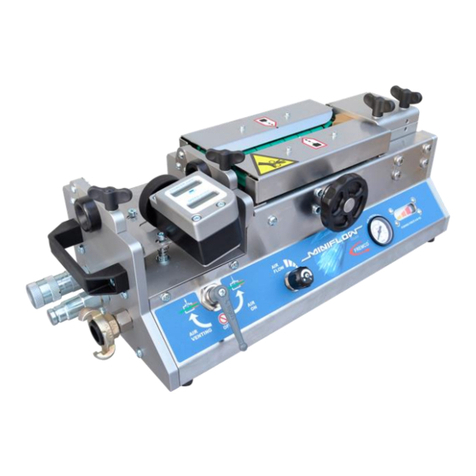
Fremco
Fremco MiniFlow RAPID operating manual

Racing
Racing RAC42CDORG-2 Original instructions

Nation Flooring Equipment
Nation Flooring Equipment 6280 series quick start guide
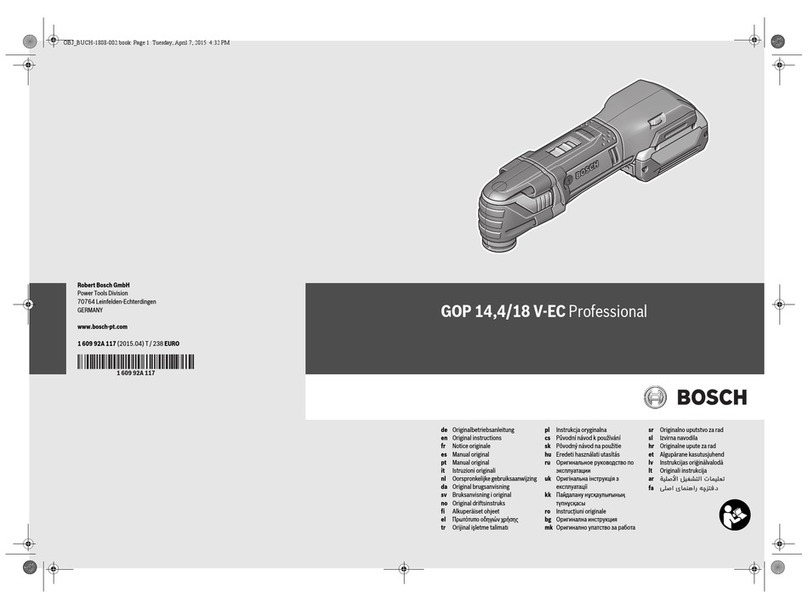
Bosch
Bosch GOP 18 V-EC professional Original instructions
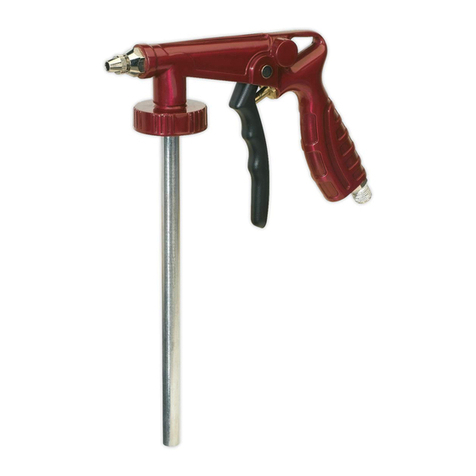
Sealey
Sealey SG14 instructions
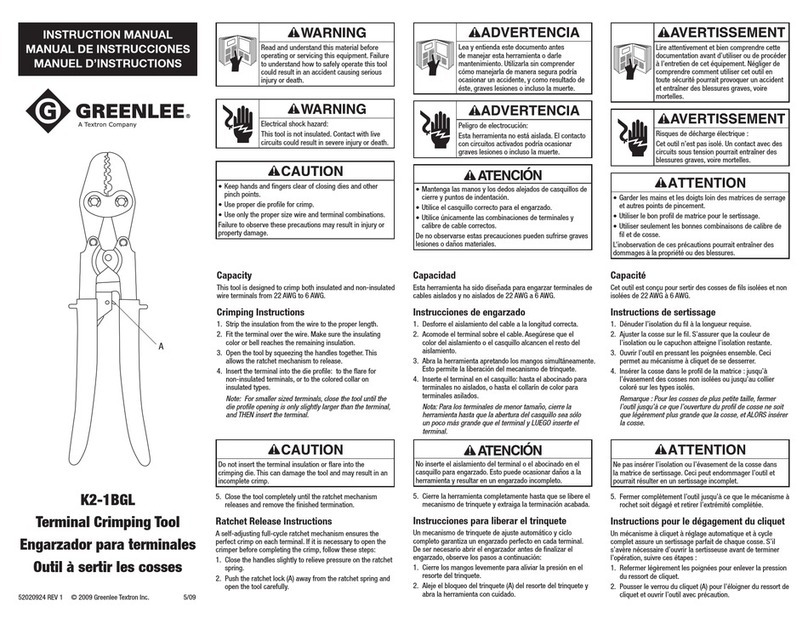
Greenlee
Greenlee K2-1BGL instruction manual

